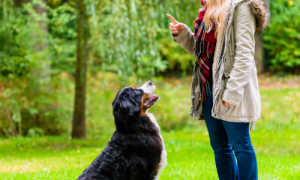Estimated reading time: 3 minutes
Today, we’re tackling an age-old question that has surely crossed your mind at least once: are dogs ticklish? As you’ve lovingly petted, snuggled, or played with your furry friend, you may have noticed certain spots that seem to elicit a unique reaction. So, let’s dive in and explore the science behind tickling, how it applies to our canine companions, and what it all means for their happiness and wellbeing.
Understanding Tickle Response
First off, let’s define what it means to be ticklish. Tickling is a sensation caused by touching a person or animal in a particular area, often resulting in involuntary movements, laughter, or other reflexive responses. In humans, there are two types of tickling: knismesis and gargalesis. Knismesis is a gentle sensation, like a feather brushing the skin, while gargalesis is more intense, causing laughter and involuntary reactions.
Now, let’s consider how tickling might translate to our four-legged friends. While dogs don’t laugh like humans, they do have their ways of expressing pleasure, such as wagging their tails, rolling over, or even playfully nipping.
Are Dogs Ticklish?
The short answer is yes, dogs can be ticklish! However, their ticklishness may not be identical to that of humans. The reactions dogs display when tickled might be similar to our responses, but the sensations they experience could be different.
Dogs have sensitive skin and nerve endings that can detect various forms of touch, including tickling. Additionally, like humans, dogs can be more sensitive in some areas than others. It’s important to remember that every dog is different, and their ticklish spots may vary.
Dog’s Sweet Spots and Tickle Triggers
Now that we know dogs can be ticklish, let’s talk about their sweet spots. These are the areas where dogs are particularly sensitive to touch and may react to tickling. Some common sweet spots include:
- Belly: Just like humans, dogs’ bellies can be very ticklish. When you gently rub or scratch your dog’s belly, they might kick their legs in response, which is known as the “scratch reflex.
- Ears: Some dogs love having their ears rubbed or scratched, while others might find it too ticklish. Pay attention to your dog’s body language to determine their preference.
- Paws: Dogs’ paws are packed with nerve endings, making them sensitive to touch. However, not all dogs enjoy having their paws touched or tickled, so be cautious when exploring this area.
- Chin and neck: Many dogs love gentle scratches under the chin or on their necks, but some might find it ticklish. Again, watch your dog’s reactions to determine their comfort level.
Tickling Safely: Dos and Don’ts
Tickling your dog can be a fun and bonding experience, but it’s essential to approach it with care and respect. Keep the following tips in mind to ensure a positive and safe interaction:
- Read your dog’s body language: Always pay attention to how your dog reacts to tickling. If they seem to enjoy it, continue the fun! However, if they show signs of discomfort or annoyance, stop immediately.
- Start gently: Begin with gentle touches, and slowly increase the intensity if your dog seems to enjoy it. Avoid being too rough or forceful, as this can cause discomfort or even injury.
- Respect boundaries: Remember that each dog is different, and what might be enjoyable for one may be unpleasant for another. If your dog shows any signs of discomfort, stop immediately and try a different approach.
- Choose the right time: Tickling your dog is best enjoyed when they’re in a relaxed and playful mood. Avoid tickling them when they’re tired, stressed, or unwell, as it may lead to negative reactions.
Conclusion
So, there you have it – dogs can indeed be ticklish! By understanding the science behind tickling and respecting your dog’s boundaries, you can create an enjoyable and bonding experience for both of you. Remember, always be gentle, watch for your dog’s reactions, and adjust your approach as needed. Now that you know the answer to the question, “are dogs ticklish?”, go ahead and share some laughter and fun with your canine companion!








